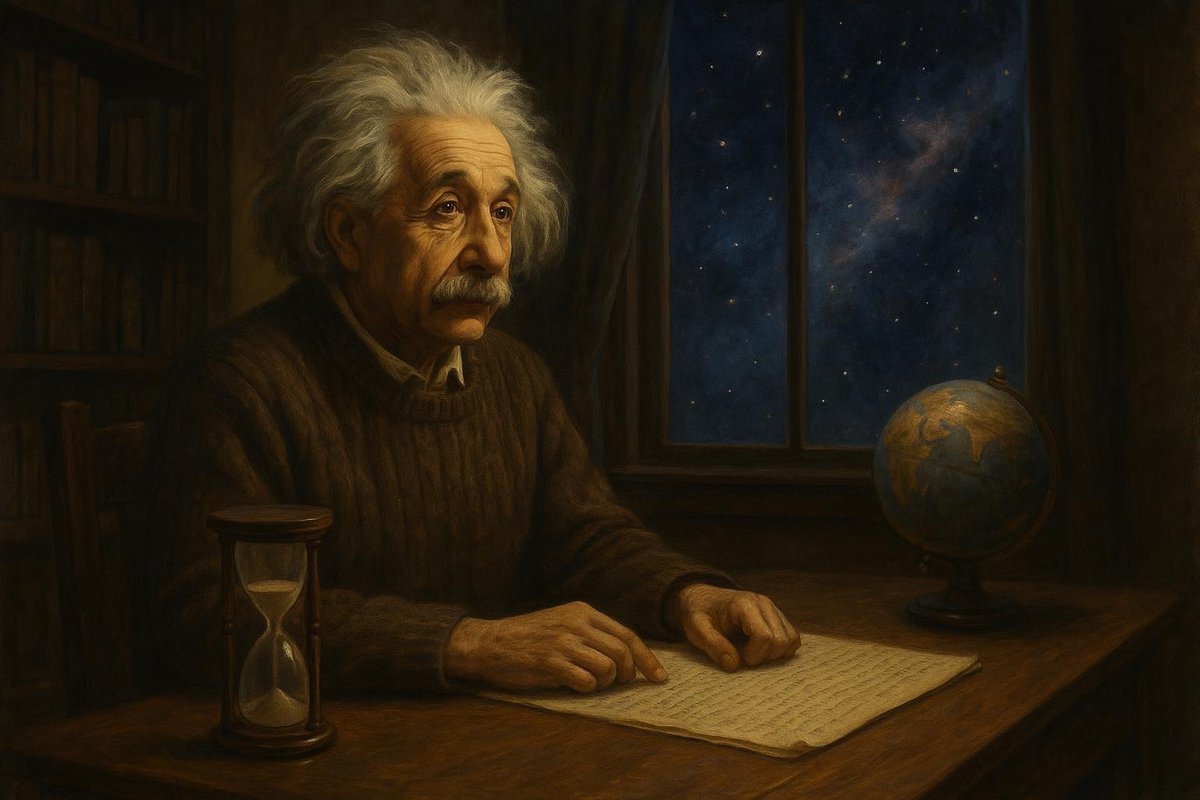
Albert Einstein once said, “The only reason for time is so that everything doesn’t happen at once.” This whimsical notion hints at the profound transformation his Theory of Relativity brought to our understanding of the universe. How could one man’s contemplation of light beams and moving trains forever alter our grasp of reality?
The Origin of a New Perspective
Before Einstein, the universe was thought to be like a grand, immutable clockwork, a reliable tapestry woven with the threads of Newtonian physics. But then, in the early 20th century, a young patent clerk in Bern, Switzerland, began to unravel this tapestry. The world in 1905 was on the cusp of monumental change, with science and technology advancing in leaps and bounds.
• At the heart of his revelations was the realization that time and space are not separate entities but interwoven into a single fabric — spacetime.
• This radical view suggested that time could bend and stretch, much like a piece of pliable rubber.
Einstein’s insights emerged from a unique historical context — an era of questioning and innovation. His work was a bold stride forward, challenging conventions and inviting humanity to view the cosmos through a fresh lens.
Key Figures in the Quantum Revolution
Einstein wasn’t alone in his journey. He stood on the shoulders of giants, drawing inspiration from those who paved the way for groundbreaking thinking. Max Planck, often regarded as the father of quantum theory, was among the luminaries who recognized the brilliance of Einstein’s ideas.
• In 1905, Einstein published four pivotal papers, earning the year the title “Annus Mirabilis” or the “Miracle Year.”
• These papers introduced concepts that would reshape physics, including the famous equation E=mc², linking mass and energy.
Planck’s support of Einstein’s work provided a crucial platform, allowing him to present and refine his theories. Their intellectual camaraderie symbolized a shift from classical to modern physics, showcasing the collaborative spirit that drives scientific progress.
The Turning Point: A New Cosmic Order
1915 marked the year Einstein completed his General Theory of Relativity, a turning point in our cosmic understanding. This theory proposed that gravity is not a force in the traditional sense but a curvature in spacetime caused by mass.
• Einstein’s prediction of light bending around massive bodies, confirmed during a solar eclipse in 1919, catapulted him to international fame.
• This phenomenon, known as gravitational lensing, illustrated the intricate dance between light and mass, capturing the imagination of scientists and laypeople alike.
The validation of Einstein’s predictions was a watershed moment, prompting a paradigm shift in our view of the universe. It underscored the dynamic nature of space and time, forever altering the narrative of science and philosophy.
Impact on the World: Beyond the Stars
Einstein’s theories did more than reshape physics; they inspired a profound introspection about our place in the cosmos. The implications of relativity extend beyond science, touching the very fabric of our philosophical and existential musings.
• As we explore the cosmos, from black holes to cosmic strings, Einstein’s framework remains a guiding light.
• His work laid the groundwork for technologies we now deem indispensable, including GPS systems that rely on relativity to function accurately.
Einstein’s legacy is a testament to the power of curiosity and critical thinking. His theories continue to challenge and inspire, reminding us that the universe is a vast, ever-unfolding mystery waiting to be explored.
In contemplating these cosmic revelations, we are invited to ponder not just the mechanics of the universe but our role within it. Einstein’s work remains a beacon, urging us to question, to explore, and to redefine our understanding of reality.
Fuel Someone Else’s Curiosity
If this exploration of Einstein’s world-changing ideas sparked your imagination, share it with others. Discuss these cosmic concepts over coffee, in classrooms, or on social media. The universe is vast, and our understanding is but a small part of it. Let’s fuel the curiosity of others and keep the flame of discovery burning bright.

Leave a Reply